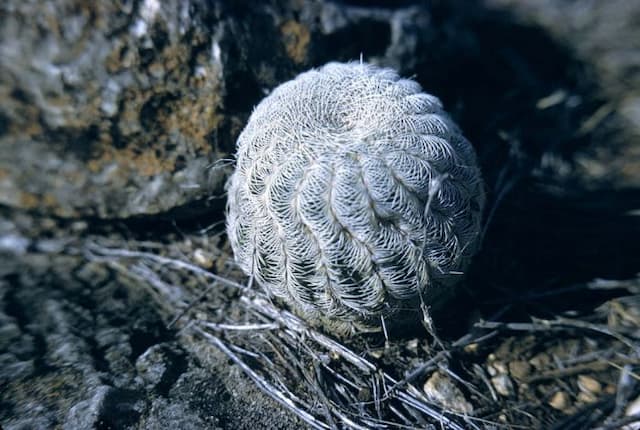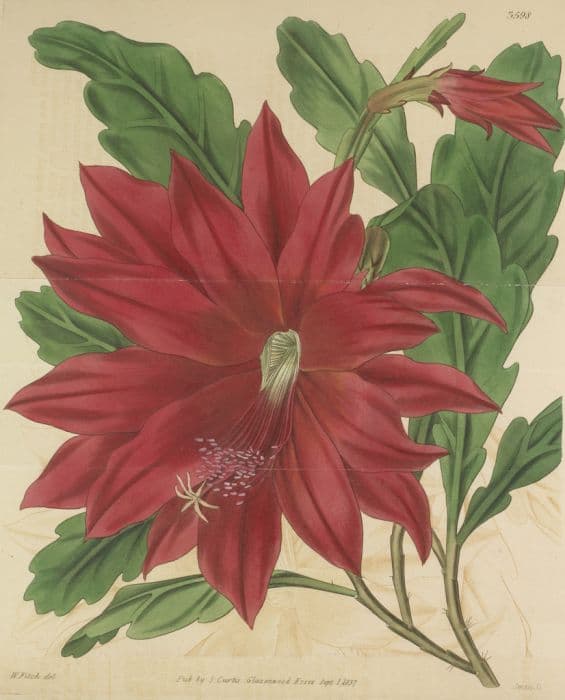Peanut Cactus Echinopsis chamaecereus

ABOUT
Echinopsis chamaecereus, commonly known as the Peanut Cactus, is a petite and attractive cactus that's notable for its clumping habit and finger-like stems. The stems are bright green, often resembling a bunch of elongated peanuts growing together in a dense cluster. The surface of the stems is adorned with small, white spines that are typically short and not overly sharp, adding a fuzzy texture to the plant's appearance. When in bloom, the Peanut Cactus produces vibrant flowers that contrast beautifully with the green stems. These blossoms are funnel-shaped and can be an impressive show, with colors usually in striking shades of orange or red. The flowers emerge from the sides of the stems, adding a burst of color to the cactus' overall look. The Peanut Cactus is a favorite among cactus enthusiasts for its playful, shrubby form and abundant flowering. It has a charm that comes from the juxtaposition of its somewhat whimsical stem shapes and the serious, drought-tolerant nature typical of cacti. This plant's unique and interesting look makes it a popular choice for succulent collections, rock gardens, and as a houseplant, where it provides visual interest without taking up too much space.
About this plant
 Names
NamesFamily
Cactaceae.
Synonyms
Peanut Cactus, Chamaecereus Silvestrii, Echinopsis Silvestrii.
Common names
Chamaecereus silvestrii, Lobivia silvestrii, Cereus silvestrii, Pseudolobivia silvestrii, Chamaecereus silvestrii f. cristatus
 Toxicity
ToxicityTo humans
The Echinopsis chamaecereus, commonly known as the Peanut Cactus, is not known to be toxic to humans. There is no evidence to suggest that touching or ingesting this plant causes any harmful effects in people. However, as with any non-edible plant, individual sensitivities can occur, so it is always advisable to exercise caution and avoid ingesting any plant material that is not confirmed as safe to eat.
To pets
The Echinopsis chamaecereus, or Peanut Cactus, is also not known to be toxic to pets. It should not cause any harm if pets come into contact with it. However, ingestion of the cactus should still be avoided as the spines can cause physical injury to the mouth and digestive tract of pets. If a pet does consume any part of the plant, monitoring for any signs of distress and consulting a veterinarian is suggested.
 Characteristics
CharacteristicsLife cycle
Perennials
Foliage type
Evergreen
Color of leaves
Green
Flower color
Red
Height
6 inches (15 cm)
Spread
12 inches (30 cm)
Plant type
Cactus
Hardiness zones
9
Native area
Argentina
Benefits
 General Benefits
General Benefits- Easy Care - The Echinopsis chamaecereus, commonly known as the Peanut Cactus, is low maintenance and well-suited for beginners.
- Drought Tolerant - It requires minimal watering, making it a great choice for water-wise gardens and those living in drought-prone areas.
- Propagation - It easily propagates from offsets, allowing gardeners to expand their collection or share with friends.
- Attractive Blooms - It produces vibrant orange-red flowers that add a pop of color to any collection.
- Compact Growth - Its small size and clumping habit make it ideal for windowsills, desks, and small spaces.
- Pest Resistant - Generally resistant to pests, it's less likely to suffer from the issues that plague more sensitive plants.
- Decoration - It's used to create attractive arrangements and displays due to its unique, finger-like stems.
- Non-Toxic - The Peanut Cactus is non-toxic, making it safe to keep around pets and children.
- Long Living - Being a type of cactus, it has a long lifespan, meaning you can enjoy its presence for many years.
 Medical Properties
Medical PropertiesThis plant is not used for medical purposes.
 Air-purifying Qualities
Air-purifying QualitiesThis plant is not specifically known for air purifying qualities.
 Other Uses
Other Uses- Peanut cactus, the common name of Echinopsis chamaecereus, can be used as a curiosity-inducing element in children's gardens due to its unusual and attractive peanut-like growth pattern, which can spark interest in botany and gardening among young minds.
- Its unique aesthetic makes it suitable for thematic landscaping, such as in desert-themed areas or rockeries where its small size and interesting shape contribute to the overall visual effect.
- With its bright orange flowers, the peanut cactus can be utilized in color-themed garden designs, such as a fiery palette, to provide bursts of color in spring and early summer.
- It can serve as a living art piece when skillfully arranged in a terrarium, creating miniature desertscapes that can double as indoor decor.
- Due to its easy propagation through offsets, peanut cactus is ideal for educational projects on plant reproduction and cloning techniques in both formal school environments and home education.
- In photography, the plant's distinctive texture and form can be a subject for macro photography, helping photographers to explore and highlight the beauty of succulent plants.
- Used in psychological therapy spaces, its low-maintenance nature can help in creating a calming and tranquil environment, particularly in horticultural therapy settings.
- The peanut cactus can be used to craft living gifts or favors for events like weddings or garden parties, especially when potted in creative containers.
- As a natural sculpture, it can be integrated into outdoor living areas or patios, where its intriguing appearance adds to the aesthetic value and conversation pieces.
- Environmental education centers can utilize the peanut cactus as a tool for teaching about water conservation and the adaptations of desert plants to arid environments.
Interesting Facts
 Feng Shui
Feng ShuiThe Peanut Cactus is not used in Feng Shui practice.
 Zodiac Sign Compitability
Zodiac Sign CompitabilityThe Peanut Cactus is not used in astrology practice.
 Plant Symbolism
Plant Symbolism- Resilience: Echinopsis chamaecereus, commonly known as Peanut Cactus, is a hardy plant that can thrive in tough environmental conditions. Its ability to withstand drought and poor soil conditions makes it a symbol of endurance and the ability to persist through challenges.
- Adaptability: As a plant that can adapt to various levels of light and sporadic watering, the Peanut Cactus symbolizes flexibility and the capability to adjust effectively in different situations.
- Protection: With its spiky exterior, Peanut Cactus is often associated with protection and defense, representing the need to guard oneself against external threats or emotional vulnerabilities.
- Beauty and Surprise: The Peanut Cactus may appear unassuming at first, but when it blossoms with beautiful flowers, it symbolizes hidden beauty and the joy of unexpected pleasures in life.
 Water
WaterPeanut Cactus should be watered every one to two weeks during the active growth phase in spring and summer, providing about one ounce of water per six-inch pot each time. During the fall and winter, reduce watering to once a month or less, as the plant enters a dormant period and overwatering can lead to root rot. Always allow the top inch of soil to dry out completely between waterings, and ensure the pot has adequate drainage to prevent water from sitting at the bottom.
 Light
LightPeanut Cactus thrives in bright but indirect sunlight, so a spot near a south-facing window with some light filtering is ideal. Directly placing it under harsh, full sun can lead to scorching of its fleshy stems, while too little light can cause it to become etiolated, where the plant stretches and becomes discolored.
 Temperature
TemperaturePeanut Cactus prefers temperatures between 50°F and 85°F, making it well-suited for typical indoor conditions. It can survive temperatures as low as 40°F for short periods, but frost or prolonged exposure can be harmful. The ideal temperature range will promote healthy growth and flowering.
 Pruning
PruningPruning Peanut Cactus is mainly done to remove dead or damaged stems and to control its spread. It's best to prune in the late spring or early summer, cutting off the unwanted stems at the base using sterilized scissors or pruning shears. Pruning can be done annually or as needed when you notice any problematic growth.
 Cleaning
CleaningAs needed
 Soil
SoilThe best soil mix for the Peanut Cactus (Echinopsis chamaecereus) is a well-draining cactus or succulent potting mix that can include a combination of regular potting soil, coarse sand, and perlite or pumice. Aim for a slightly acidic to neutral soil pH of about 6.0 to 7.5.
 Repotting
RepottingPeanut Cactus should be repotted every two to three years, or when it has outgrown its pot. This is often necessary for young, actively growing plants that can quickly fill a container.
 Humidity & Misting
Humidity & MistingPeanut Cactus thrives in low humidity environments typical of arid regions. It is tolerant of dry air and does not require high humidity levels.
 Suitable locations
Suitable locationsIndoor
Place Peanut Cactus in bright, indirect sunlight indoors.
Outdoor
Grow Peanut Cactus in full sun to partial shade outdoors.
Hardiness zone
10-11 USDA
 Life cycle
Life cycleEchinopsis chamaecereus, commonly known as the peanut cactus, initiates its life cycle with seed germination where the seed absorbs water and swells, eventually allowing the embryonic plant to emerge. As a seedling, the peanut cactus establishes roots and starts to develop the characteristic segmented stems, photosynthesizing to fuel its growth. Upon reaching maturity, it begins to produce vibrant, funnel-shaped flowers primarily during spring and early summer, typically emitting a pleasant fragrance to attract pollinators. After successful pollination, flowers develop into fruit that contains seeds, completing the reproductive cycle. Under suitable conditions of light, water, and temperature, the peanut cactus can also propagate vegetatively, with segments breaking off and rooting to form new plants. The peanut cactus has a perennial life span, meaning it can live for many years, continuously growing and producing flowers annually.
 Propogation
PropogationPropogation time
Spring to summer
The most popular method to propagate Echinopsis chamaecereus, commonly known as peanut cactus, is through offsets. These small, peanut-like protrusions that form around the base of the mature plant can be easily separated and replanted. To do this, gently twist off a healthy offset and allow it to callous over for a couple of days to prevent rotting when planted. Once a callous has formed, the offset can be placed in a well-draining cactus potting mix, barely covering the base. It is important to keep the soil lightly moist but not wet until roots have established, which usually takes a few weeks under warm conditions. After rooting, the young cactus can be treated as an adult plant, with less frequent watering and plenty of sunlight.








